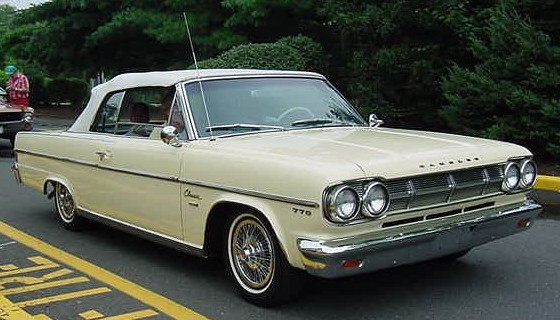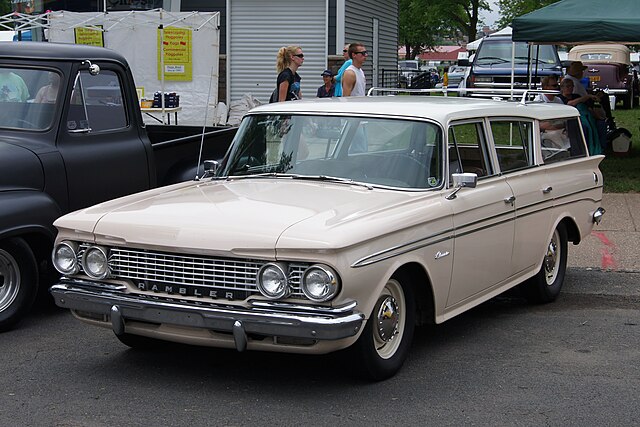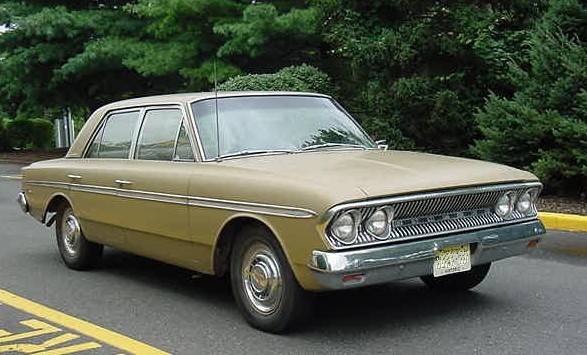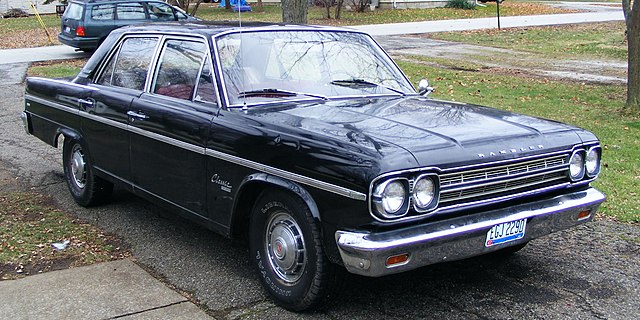
The AMC Rambler Classic was an iconic automobile that marked a significant era in the American automotive industry. Produced by American Motors Corporation (AMC) from 1961 to 1966, the Rambler Classic showcased a blend of innovation, affordability, and compact efficiency.
This model became a cornerstone of AMC’s success during the early 1960s, appealing to a wide demographic looking for practical and economical transportation.
Introduction to the Rambler Classic

The Rambler Classic was introduced in 1961 as a successor to the Rambler Six and Rambler Rebel V8 models. Designed to offer a balance between the smaller Rambler American and the larger Rambler Ambassador, the Classic was positioned as a mid-size car. It stood out in the market for its compact dimensions, yet spacious interior, and its conservative yet appealing styling.
The launch of the Rambler Classic was met with enthusiasm, as it filled a niche for consumers who desired a vehicle that was economical without compromising on space and comfort. The Classic’s initial success was a testament to its design philosophy, which focused on practicality and user-friendliness, characteristics that were embodied throughout its production run.
AMC marketed the Rambler Classic as an ideal family car, emphasizing its build quality, affordability, and low cost of ownership. This marketing strategy helped AMC establish a strong foothold in the mid-size car market segment.
Design and Engineering

The design of the Rambler Classic was rooted in simplicity and functionality. Throughout its production years, the Classic underwent several stylistic updates that maintained its original appeal while aligning with evolving consumer tastes. The 1961 model featured a boxy, yet attractive body style with tail fins that were fashionable at the time.
In 1963, the Classic received a major redesign, introducing a more streamlined appearance with smoother lines that reduced the boxiness of the earlier models. This redesign was accompanied by engineering improvements, including a more robust unibody construction which enhanced the vehicle’s structural integrity and ride quality.
The Classic was available in several body styles, including two-door and four-door sedans, a station wagon, and a hardtop coupe. This variety ensured that it could meet the needs of different consumers, from families to business professionals.
Performance and Innovations

Under the hood, the Rambler Classic started with a range of inline-six engines, which were later complemented by more powerful V8 options. Initially, the standard engine was a 195.6 cubic inch (3.2 liter) inline-six, but by 1963, a 287 cubic inch (4.7 liter) V8 became available, offering significantly more power.
One of the Rambler Classic’s notable innovations was the introduction of the “E-Stick,” a clutchless manual transmission that used a vacuum-operated system to help automate clutch engagement. This feature was designed to combine the fuel efficiency of a manual transmission with the convenience of an automatic, although it was not widely adopted.
Handling and comfort were also highlights of the Classic, with features like “Deep-Dip” rustproofing and “Ceramic-Armored” exhaust systems that extended the vehicle’s lifespan and reliability. Such innovations reflected AMC’s commitment to quality and value for money.
Awards and Recognition

The Rambler Classic’s significance in the automotive market was underscored when it was named the 1963 Motor Trend Car of the Year. This prestigious award was recognition of the Classic’s value proposition, engineering excellence, and its role in pioneering the mid-size car segment.
The accolade helped propel the Rambler Classic’s sales and solidified its reputation among American consumers. It was praised for its blend of performance, comfort, and economy, appealing to a broad spectrum of buyers.
Legacy and Impact
The Rambler Classic’s production run ended in 1966, making way for newer models like the AMC Rebel. However, its legacy continued to influence AMC’s design and marketing strategies. The Classic had successfully challenged larger competitors by offering a viable mid-size option that did not compromise on quality or cost-effectiveness.
Today, the AMC Rambler Classic is celebrated as a classic car, cherished by collectors and enthusiasts for its unique position in American automotive history. Its practical approach to design and innovation serves as a reminder of a period when compact efficiency and affordability were paramount in the auto industry.
The Classic not only reflects the values of its time but also stands as a testament to AMC’s ingenuity and adaptability in a competitive market.
